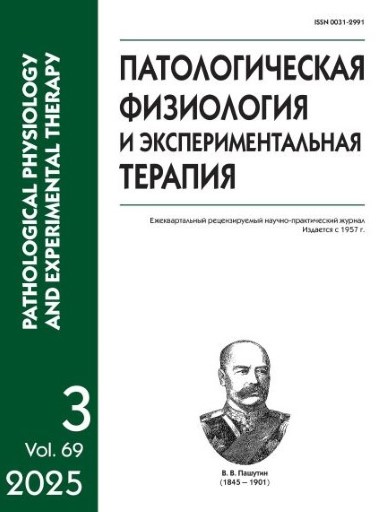Erythrosomes – preparation and uptake by endothelium in vitro
Abstract
Annotation
Introduction. Many human diseases are pathogenetically associated with endothelial dysfunction, which motivates the development of drugs that affect endotheliocytes. To solve the problem of developing therapy aimed at the endothelium, it is proposed to use nanomedicine methods, namely, the creation of nanoscale structures that deliver a drug to endotheliocytes. Nanovesicles from human erythrocyte membranes are a promising candidate for the role of a non-toxic, biocompatible drug carrier in endotheliocytes. The aim of the work is to develop a technology for obtaining nanoscale vesicles of human erythrocyte membranes loaded with a model compound, and to study the absorption of the obtained vesicles by the endothelium in an in vitro model.
The methodology. Erythrocyte ghosts were obtained by hypotonic hemolysis, loaded with a membrane impermeable fluorescing dye, the isotonicity of the medium was restored, and nanoscale erythrocyte vesicles were obtained by ultrasonic homogenization, which were then washed by dialysis or ultracentrifugation. Erythrosomes were characterized by photon correlation spectroscopy and transmission electron microscopy with reverse contrast. Cellular uptake of the erythrosomes by EA.Hy926 cells was studied using the flow cytofluorometry method and the cytotoxicity of erythrosomes was evaluated in an MTT test.
Results. Preparations of erythrosomes, nanoscale vesicles from erythrocyte ghosts, were obtained and characterized. It has been shown that erythrosomes loaded with membrane impermeable fluorescing dye are absorbed by cells of the human EA.Hy926 endothelial line, considered as an In Vitro model of the endothelium. The transport of erythrosomes into endotheliocytes is energy-dependent, as it is blocked at 4 ° C. Erythrosomes have no cytotoxic effect.
Conclusion. A simple and technologically advanced technique has been developed for obtaining nanoscale vesicles loaded with a model compound and absorbed by endotheliocytes from human erythrocyte membranes, which makes it possible to consider the obtained erythrosomes as promising means of drug delivery to the endothelium.






